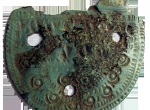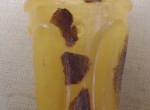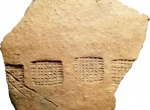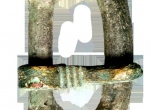Piwonice
Piwonice (alternately, Kalisz Piwonice), now a southern district of Kalisz, on the left bank of the Prosna River, is a place-name long well known to archaeologists thanks to its rich archaeological record on human settlement during different periods of prehistory by diverse archaeological cultures (Neolithic, Bronze Age, Early Iron Age, Pre-Roman Period, Roman Period, Early Middle Ages). The →Przeworsk Culture settlements dating to the Pre-Roman, the Roman and the →Migration periods the remains of which were identified at Piwonice were served presumably by a burial ground identified a small distance to their north. The driving force behind the archaeological research at Piwonice was Krzysztof Dąbrowski. A small-scale excavation made in 1955-1957 at Piwonice site no. 3 was followed in 1952-1967 by a more ambitious project of investigation, of Piwonice site no. 1, a settlement found some 500 m more to the south-west. The archaeological materials from these two excavations mostly have a Przeworsk Culture attribution and include at least 33 features (8 described as “buildings”) assigned to occupation phase I (1st century BC – 1st century AD). Arguably one of the most remarkable features, originally recorded as “buildings 4 and 20”– and interpreted as the remains of a single building, with two occupation levels recorded as nos. 4a/53 and 4b/53, were later reinterpreted as a pit-hut (phase A3) and an intruding →Migration Period feature. Attributable to the latter is a bronze buckle plate, type Strzegocice–Tiszaladány–Kercz (Fig. 1). The closest analogy to the artefact from Piwonice is a find from Pyszków, distr. Sieradz, dated to phase D2. This type of buckle plate is common in many regions of Europe, with the largest concentration recorded in Hungary, which suggests that buckles with this form of the buckle plate derive from nomad cultures. The buckle plate from Piwonice survived only in its upper part, stamp-decorated in the →Sösdala/Untersiebenbrunn style (phase D2/D2a of J. Tejral and V. Bierbrauer). Its presence at Piwonice suggests the presence of a Germanic population as late as during the first half of the 5th century, perhaps even longer. This depends on the dating, not fully conclusive, of another find from the same settlement - a glass footed beaker of yellow-brown glass decorated with a moulded ornament of four large ovals (Fig. 2) which after lifting was soon lost to corrosion, not to be prevented by conservation treatment. The best analogy to the Piwonice beaker is the find from Kosina near Berehove in southwestern Ukraine. J. Werner classified this vessel form as type Tu–Piwonice, dating its manufacture to the final decades of the first half and the beginning of the second half of the 5th century. At first this dating of Tu-Piwonice beakers was accepted by G. Rau but in his study published in 2008 he revised it to the late 5th c. – around the year 500. Next to the finds from Piwonice and from Tu in Norway G. Rau included in this type the beakers from Vorning in Jutland and Žuráň in the Czech Republic. S. Żółkowski traced the centres of manufacture of this beaker form to the Balkan provinces of the empire, similarly as G. Rau who, basing on stylistic traits typical for Greek art, looked for them in the south-east.
MR
Literature: S. Krukowski, Cmentarz w Piwonicach (pow. kaliski), Światowit, vol. XI, 1913, p. 43-50, tabl. III-V; K. Dąbrowski, Osadnictwo z okresów późnolateńskiego i rzymskiego na stanowisku 1 w Piwonicach, pow. Kalisz, Materiały Starożytne, vol. IV, 1958, p. 11-23; K. Dąbrowski, R. Kozłowska, Dwie osady z okresów późnolateńskiego i rzymskiego we wsi Piwonice, pow. Kalisz, Materiały Starożytne, vol. V, 1959, p. 318-327; K. Dąbrowski, Osada z okresów późnolateńskiego i rzymskiego we wsi Piwonice, pow. Kalisz, Wiadomości Archeologiczne, vol. XXXV, z. 3, 1970, p. 347-392; M. Mączyńska, Schyłkowa faza kultury przeworskiej, (in:) Kultura Przeworska, vol. 4, Lublin 1998, p. 25-53.
-
 full resolution
full resolution
Fig. 1. (fot. S. Miłek).
-
 full resolution
full resolution
Fig. 2. (photo: S. Miłek).
-
 full resolution
full resolution
Fig. 3. (photo S. Miłek).
-
 full resolution
full resolution
Fig. 4. (fot. S. Miłek).


